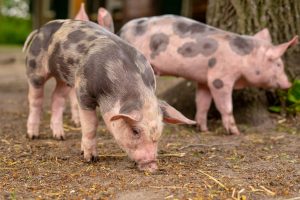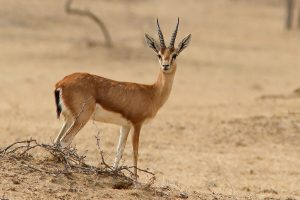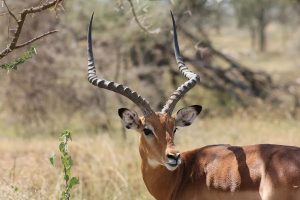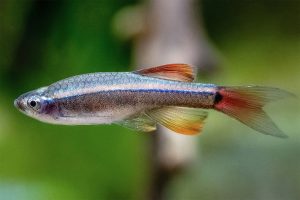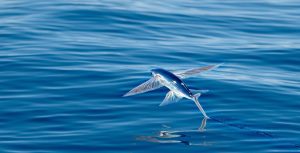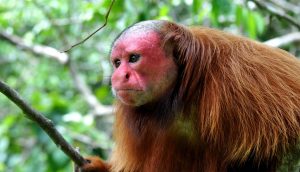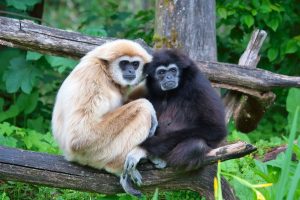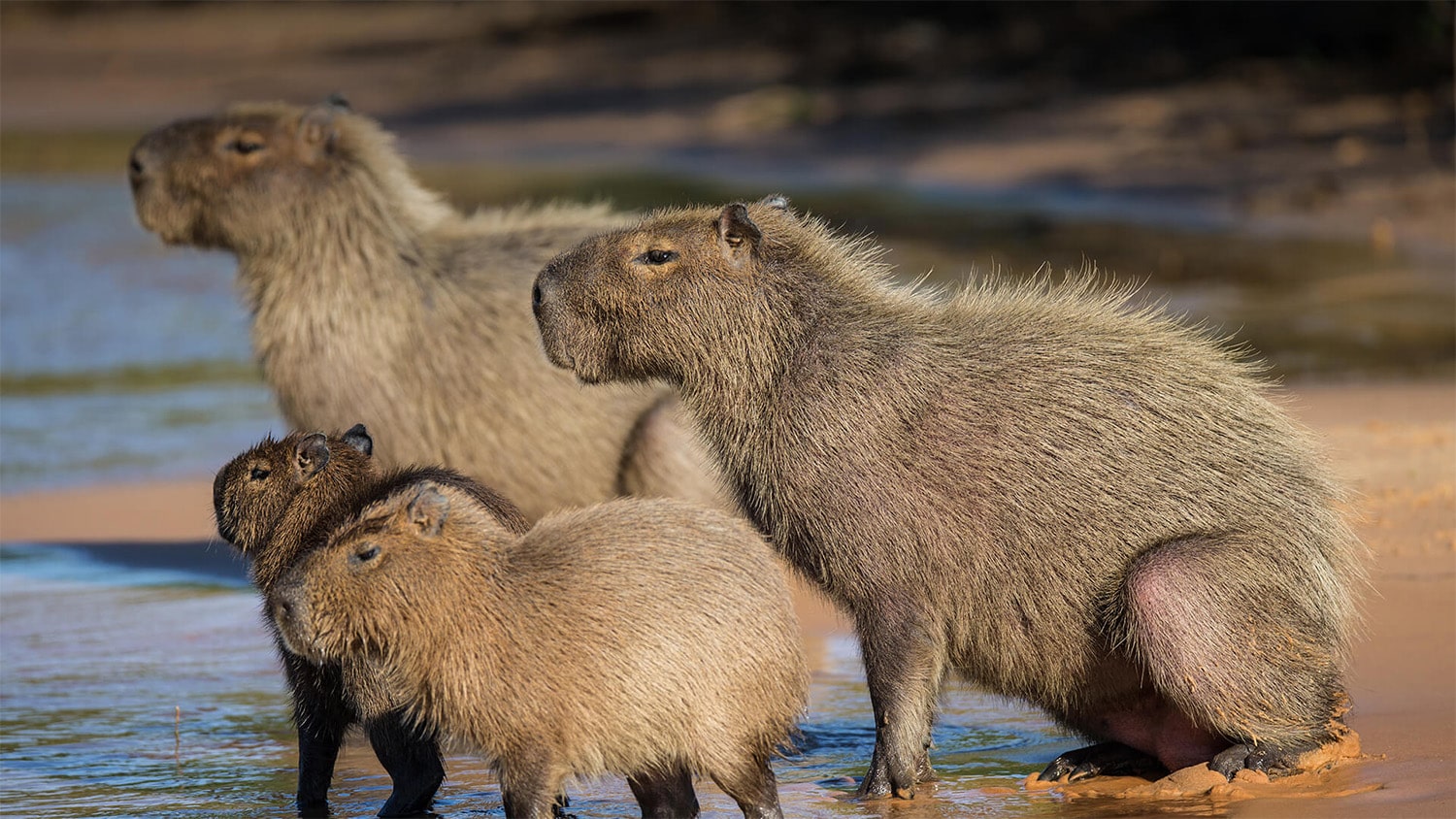
32 interesting facts about capybaras
- 👁️ 1695
Capybaras are fascinating creatures that often capture the curiosity of those who encounter them. Known as the world’s largest rodents, these gentle giants are native to South America and are found living in groups along riverbanks, lakes, and wetlands. Capybaras are well-adapted to their aquatic habitats, showcasing a variety of unique traits that help them survive and thrive in both water and on land. They have a calm demeanor and are often seen coexisting peacefully with a wide range of other wildlife, making them an integral part of their ecosystems. Discover more about these intriguing animals through these thirty-two interesting and informative facts.
- Capybaras are scientifically known as Hydrochoerus hydrochaeris, which translates to ‘water hog.’
- They can grow up to 1.2 meters (4 feet) in length and weigh up to 65 kilograms (143 pounds).
- Capybaras are social animals and typically live in groups of 10 to 20 individuals.
- These groups are often led by a dominant male.
- They have webbed feet which make them excellent swimmers.
- Capybaras can hold their breath underwater for up to five minutes at a time.
- They eat a mainly herbivorous diet, feeding on grasses, aquatic plants, fruits, and tree bark.
- Capybaras have specialized digestive systems with a large cecum, where bacteria break down cellulose and allow them to absorb nutrients effectively.
- Their teeth are continuously growing, and they chew to keep them from overgrowing.
- Capybaras are crepuscular, most active during twilight, at dawn and dusk.
- They can sleep in water, keeping only their noses out of the water to breathe.
- Capybaras are excellent at thermoregulation, using water to keep cool during hot weather.
- They have a lifespan of about 8 to 10 years in the wild and up to 12 years in captivity.
- Female capybaras can give birth to litters of up to eight pups.
- The gestation period for capybaras is about 150 days.
- Capybara pups are precocial, meaning they are well-developed with fur and can see at birth.
- Young capybaras can eat solid food within a week of birth, although they continue to suckle from any female in the group.
- Capybaras are vocal animals, communicating with a variety of sounds including purrs, barks, grunts, and whistles.
- They mark their territory using scent glands located on their faces.
- Capybaras are a keystone species in their environment, influencing the ecological balance of their habitats.
- Their feces are utilized by other species including dung beetles and even eaten by other capybaras as part of their digestive process.
- Capybaras are preyed upon by several predators including jaguars, anacondas, and caimans.
- They have been known to form symbiotic relationships with birds such as wattled jacanas and various species of herons that feed on insects stirred up by the capybaras’ movement.
- In some areas, capybaras are farmed, and their meat is considered a delicacy.
- Capybaras are sometimes kept as pets outside their native habitat, under special permit.
- They are subject to religious consumption restrictions during Lent in Venezuela, where they are classified as fish.
- Capybaras have been featured in a variety of media, from documentaries to animated films.
- In some cultures, they are considered a symbol of peace and tranquility.
- Capybaras have a very calm nature and are often seen interacting peacefully with a wide range of other animals.
- They are able to run as fast as 35 kilometers per hour (22 mph) over short distances.
- Capybaras have sparse fur and sensitive skin, often using mud to protect themselves from the sun.
- In some regions, capybaras are significant for eco-tourism, attracting visitors eager to see these unique animals in their natural habitat.
Capybaras are truly remarkable for their size, social behavior, and adaptability to their environment. These gentle giants of the rodent world continue to fascinate and delight wildlife enthusiasts and researchers alike. By understanding the important role they play in their ecosystems and the various unique aspects of their behavior and biology, we gain a greater appreciation for capybaras and the conservation efforts needed to ensure their survival. Their peaceful nature and ability to coexist with other species also offer a compelling example of harmony within the animal kingdom.

